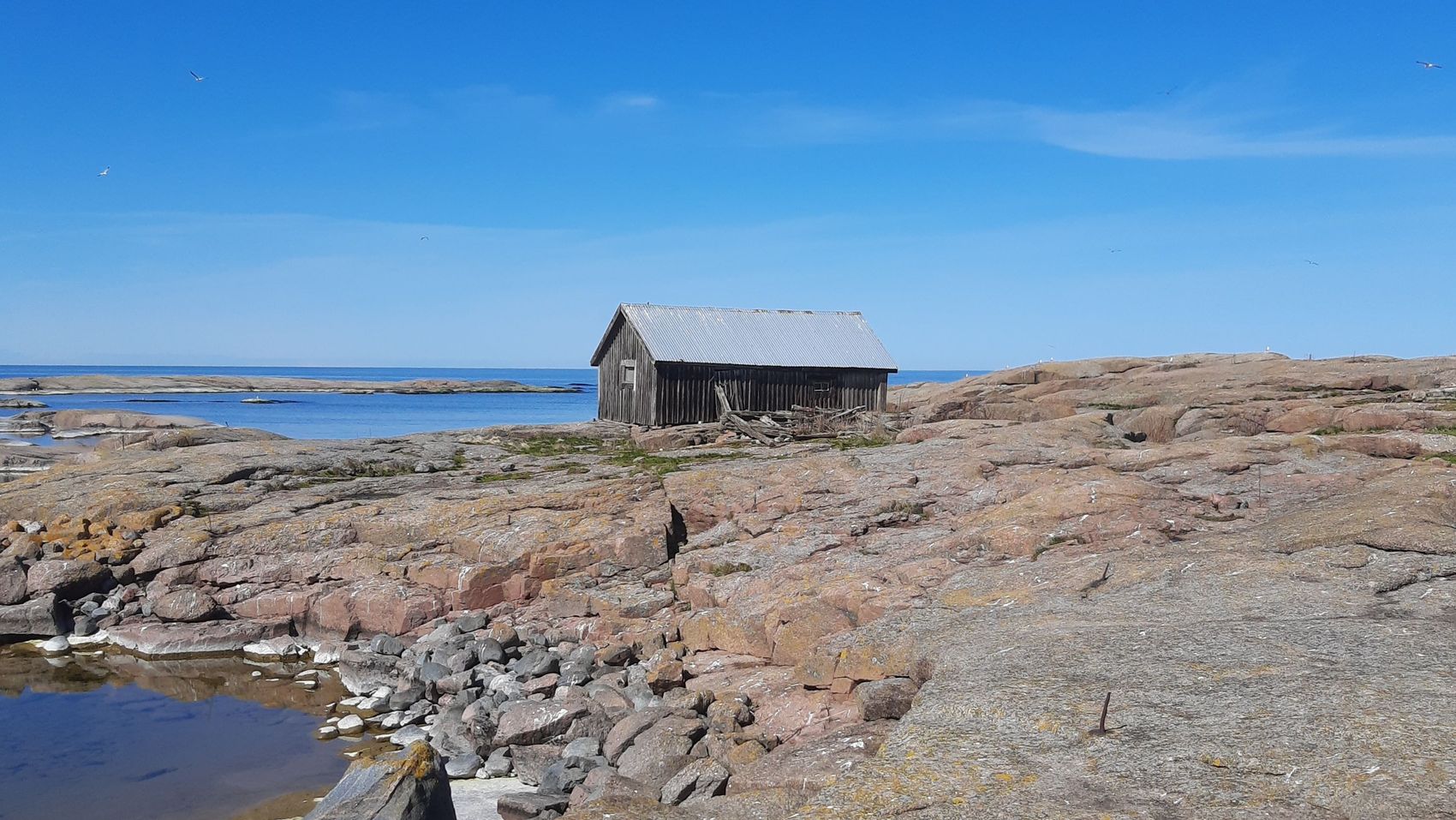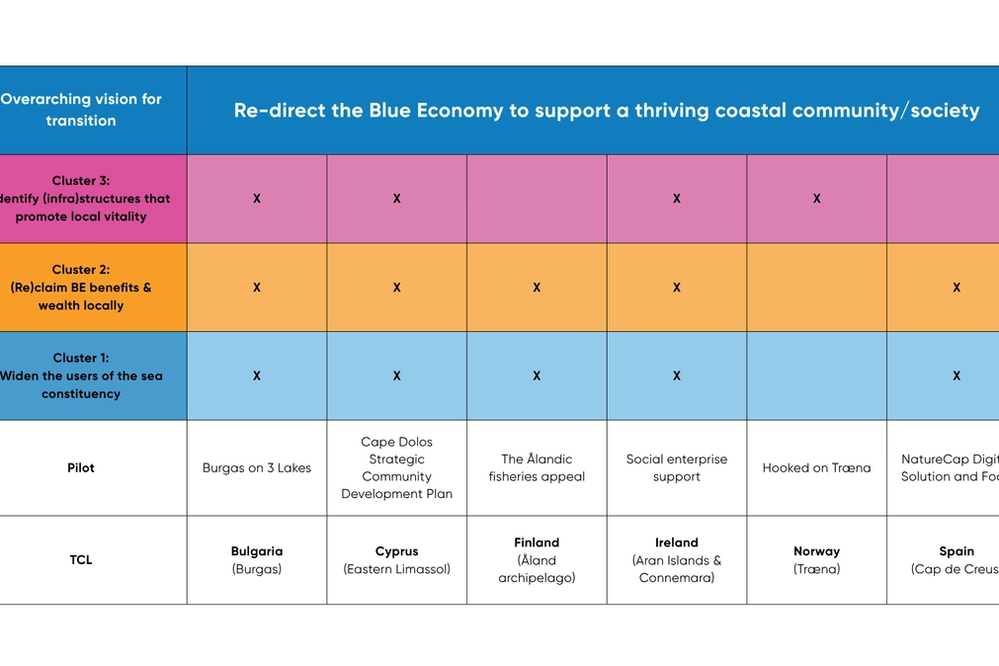With the overarching vision to ‘re-direct the blue economy* to support a thriving coastal community or society’, the TCLs* worked on specific challenges identified in a series of workshops and meetings in these localities. While there were a diverse and varied set of solutions, they can be grouped within three different broader strategies to enact change. This document further explains the overarching vision and the three groups that are presented below.
Widen the users of the sea constituency
This strategy is grounded in the theme of nature connectedness and (re)establishing a constituency of users of the sea who recognise their role in ocean health and their own dependencies on oceans and coastal areas. Many of the labs captured in this cluster have emphasised socioecological connections in their pilots and include public processes to reach groups that have not historically participated in coastal and marine planning or blue economy sectors. In some cases, the intention to make the community ‘more attractive’ to live in the coastal community has roots in nature connectedness and deliberately linking the coastal environment to place-making and community vitality.
Examples from the TCLs
Burgas, Bulgaria: Bulgarian Biodiversity Foundation looked to raise the visibility of the 3 intercoastal lakes and build cycling and walking trails to enable locals and tourists to experience the natural and cultural heritage offerings of these landscapes and ecosystems (See Burgas TCL Poster; read Handbook Chapter 4, Section 4.5).
Åland, Finland: Åland’s Fisheries Agency informed water owners in Åland to raise their awareness of their interdependence and influence on sustainable fisheries (See Åland TCL Poster; read Handbook Chapter 4, Section 4.3).
(Re)claim blue economy benefits & wealth locally
This cluster encapsulates the intentions in several pilots and TCLs to increase the financial and socioeconomic benefits and wealth generation from blue economy activities. Strategies and related activities in the TCLs focus on civic engagement as well as questioning and critiquing current practices and status.
Examples from the TCLs
Connemara, Ireland: Údarás worked to further strengthen local entrepreneurship in the social enterprise sector, developing a guidance document on the social economy and a field visit to locally-owned renewable energy projects in Scotland (See Connemara and Aran Islands TCL Poster; read Handbook Chapter 4, Section 4.2).
Cap de Creus, Spain: The NaturCap app (endorsed by the UN Ocean Decade Cultural Heritage Framework Programme) that uses marine cultural and natural integrated heritage to connect communities, promote ocean literacy, and support the creation of equitable marine protected areas across the Mediterranean (See Cap de Creus TCL Poster; read Handbook Chapter 4, Section 4.6).
Identify (infra)structures that promote local vitality
This strategy intends to alter (social, political, economic) structures and encourage infrastructure development to benefit coastal communities. This strategy related to community viability and adaptations that were rooted in heritage to achieve continuity. This strategy relates to TCL pilots that address migration and retention, connectivity (access and mobility dimensions), and those seeking to build viable and vital inhabited coastal communities.
Examples from the TCLs
Træna, Norway: The “Hooked on Træna” pilot (insert link to hooked on Trana strategy) is a co-created strategy to strengthen local expertise and promote collaboration between stakeholders through targeted activities, with the goal for retention and attraction of people to live in Træna (See Træna TCL Poster; read Handbook Chapter 4, Section 4.4).
Eastern Limassol, Cyprus: This pilot begins a master planning process (insert Cape Dolos Strategic Community Development Plan) to enable locals to better access the sea and cultivate an aesthetic, recreative, and wellbeing value for the sea and the coastal environment. One of the potential interventions identified in the Development Plan, is matured by the end of the Pilot at a stage which is ready to be submitted for licensing by the local authority. In the case of the Cypriot TCL, this development project is a Nature Path (See Eastern Limassol TCL Poster; read Handbook Chapter 4, Section 4.1).
D2.2 Scale-up and Replication of the Pilots and Chapter 2 of the Handbook on TCLs as Co-creation both provide further information about the pilot examples.
Table 2: Overarching vision for transition.

